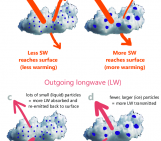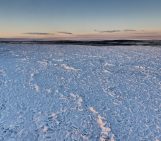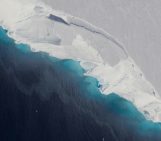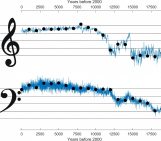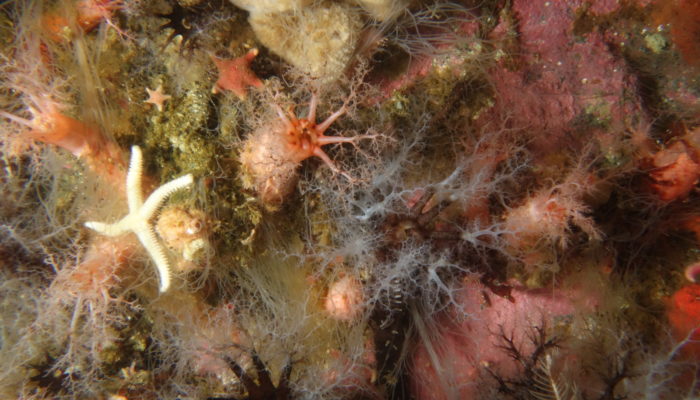
Beneath the frozen surface of the Southern Ocean, live some of the most spectacular creatures on earth. These creatures are spectacular not only in appearance, but also in their ability to survive in such an extreme environment as Antarctica. Here, temperatures deviate only slightly from 0°C, and food is scarce during the winter months. How do these diverse creatures live in these conditions and what role do they each play in the ecosystem?
Rothera research station
Situated on an island on the Western Antarctic Peninsula, Rothera Research Station is the British Antarctic Survey’s (BAS) home from home for a wide variety of polar science. Being located on an island, this station is the ideal location for marine science in particular. Marine biologists work here all year round, researching the organisms that live here and collecting a wealth of data for both ocean chemistry and biology. During the summer, a number of BAS scientists and their collaborators are given the unique opportunity to join the marine team and carry out their research in one of the most spectacular environments on our planet. I was lucky enough to be given the opportunity to join the team this season for my PhD research. My research focuses on the marine invertebrates that live on the Antarctic sea floor, aiming to understand how these creatures survive in such extreme conditions, uninhabitable for most life on Earth.
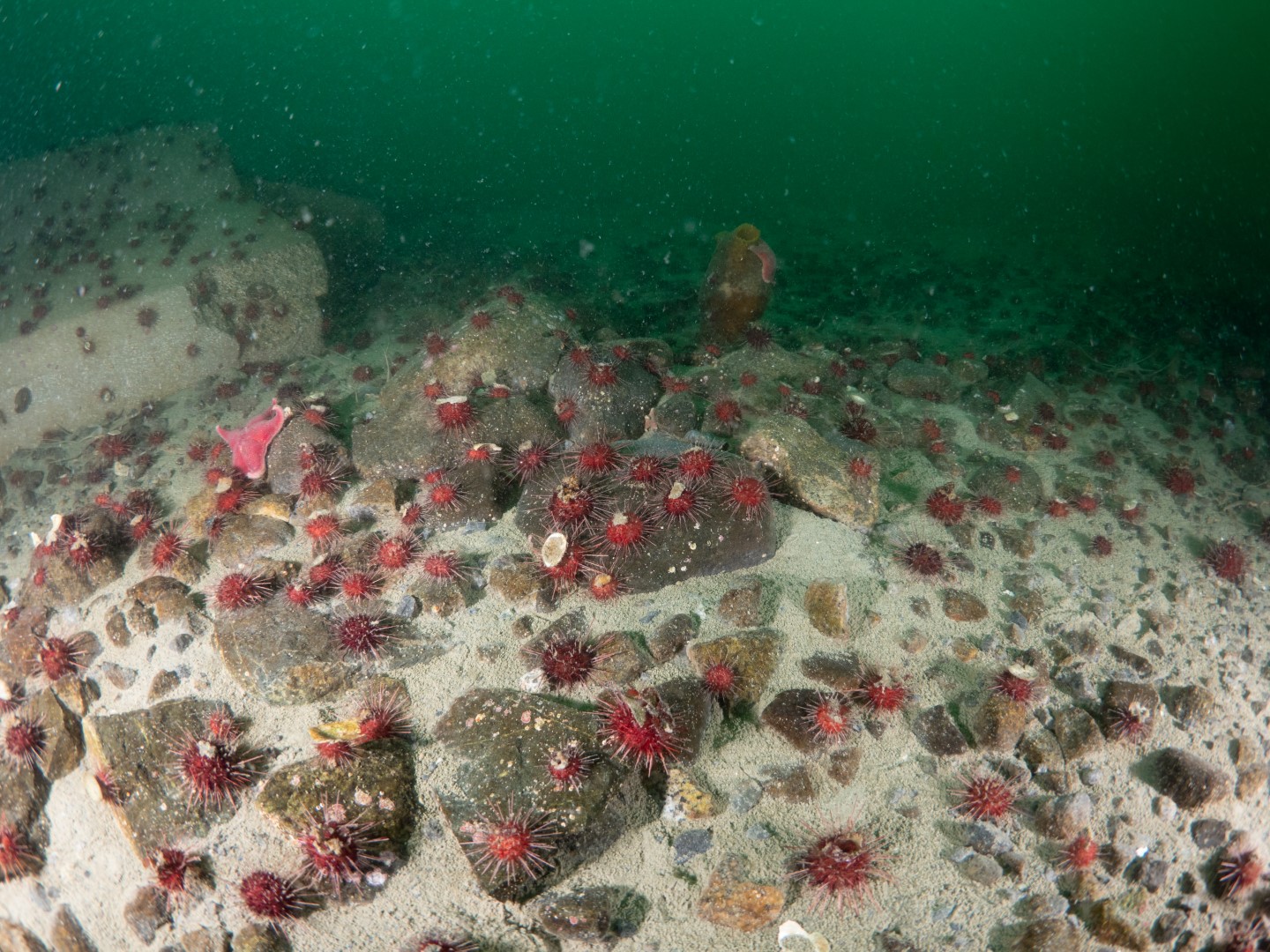
Figure 1: The Antarctic sea urchin, Sterechinus neumayeri, dominates this area of the sea floor, feeding on a variety of food types associated with the rock faces and sediment [Credit: Joe Marlow].
Adapting to life beneath the ice
During winter, life in the ocean is locked away beneath the ice where temperatures dip to near -2°C and photosynthesis ceases without sunlight. At this state, many less mobile creatures live in almost dormancy, minimising energy use as they endure months of starvation (Brockington and Clarke, 2001). However, as the Austral summer commences, the ice begins to melt away and algae living within it are released into the water column, initiating an influx of productivity and subsequently feeding life in the Southern Ocean (Venables et al., 2013). This change in the water is evident from the marked reduction in visibility which can go from more than 60 m of crystal clear waters in winter, to a pea soup appearance with less than 2 m of visibility in summer.
The waters around Antarctica are characterised by this highly seasonal influx of food along with its low and stable temperatures all year round. This boom and bust access to food, coupled with high energy requirements for surviving at low temperatures, forces all creatures living here to adapt how they use their energy just to survive (Peck, 2016).

Figure 2: The Antarctic sea urchin, Sterechinus neumayeri. It is suspected that the urchin uses large algae for camouflage whilst it feeds on the debris gathered between the rocks and the algae encrusting the rock surfaces [Credit: Simon Morley].
Feeding time for the Antarctic sea urchin
One creature living in this environment is the Antarctic sea urchin, Sterechinus neumayeri. Living at depths from 5 m to 640 m, this creature dominates many areas of the benthos and is hence a key species for this ecosystem (Figure 1). However, rather than feeding directly on the algae in the water column, the sea urchin satisfies itself with a large variety of food, from the algae encrusting a rock, to faeces and other debris that mix into the sediment (Figure 2). Research into how this significant component of the community on the sea floor contributes to decomposition and nutrient cycling is key to understanding its importance and role in this ecosystem.
One way we can investigate the sea urchin’s feeding habits is by bringing them into the lab to monitor faecal production and composition. Firstly, we observe what the urchin is eating in the environment. To do this, we have been finding these urchins and simply turning them over to see what they are grazing on (Figure 3). We take a sample of the food, and also collect the urchin itself for further analysis in the aquarium. Over the days following, faeces are collected daily until production ceases, and then analysed to obtain organic and non-organic content, which we can compare to the organic and non-organic content of the food we think it ingested. From this data, we can not only understand the rate of feeding in the field, but we can also determine the fraction of energy assimilated by the organism and hence understand the transfer of energy through the food chain and its role in the nutrient cycle (Conover, 1966).
Studies such as these are, of course, important to better understand how life survives in one of the coldest places on Earth, but made more so as we try to understand the impacts of a rapidly warming climate. Studies show that many animals that live on the Antarctic sea floor are much more sensitive to small changes in temperatures of just a few degrees (Peck, 2005). We can therefore not only aim to understand how these warming temperatures will impact ecosystems here, but also use these animals as a sensitive barometer for environmental change across the globe.

Figure 3: (left) SCUBA divers survey the benthos for feeding urchins, gathering both food samples and urchins to bring back to the aquarium. (right) The urchins are turned over to see what they are feeding on. Food particles are visible here in the mouth part of the urchin [Credit: Joe Marlow].
Further reading
- Brockington, S. and Clarke, A. (2001) ‘The relative influence of temperature and food on the metabolism of a marine invertebrate’, Journal of Experimental Marine Biology and Ecology, 258(1), pp. 87–99. doi: 10.1016/S0022-0981(00)00347-6.
- Conover, R. (1966) ‘Assimilation of organic matter by zooplankton’, Limnology and Oceanography, 11, pp. 338–345.
- Peck, L. S. (2005) ‘Prospects for survival in the Southern Ocean: Vulnerability of benthic species to temperature change’, Antarctic Science, 17(4), pp. 497–507. doi: 10.1017/S0954102005002920.
- Peck, L. S. (2016) ‘A Cold Limit to Adaptation in the Sea’, Trends in Ecology and Evolution. Elsevier Ltd, 31(1), pp. 13–26. doi: 10.1016/j.tree.2015.09.014.
- Venables, H. J., Clarke, A. and Meredith, M. P. (2013) ‘Wintertime controls on summer stratification and productivity at the western Antarctic Peninsula’, Limnology and Oceanography, 58(3), pp. 1035–1047. doi: 10.4319/lo.2013.58.3.1035.
Edited by Andy Smedley
 Rebecca de Leij is a PhD student at the University of Southampton in the United Kingdom. Her research focuses on understanding how reproduction and functioning in Antarctic marine invertebrates is affected by the changing environment. Rebecca is funded through the National Environmental Research Council (NERC) Doctoral Training Partnership ‘SPITFIRE’. The work presented in this blog was additionally funded by the Collaborative Antarctic Science Scheme (CASS). Twitter: @rebeccadeleij. Contact Email: r.i.de-leij@soton.ac.uk.
Rebecca de Leij is a PhD student at the University of Southampton in the United Kingdom. Her research focuses on understanding how reproduction and functioning in Antarctic marine invertebrates is affected by the changing environment. Rebecca is funded through the National Environmental Research Council (NERC) Doctoral Training Partnership ‘SPITFIRE’. The work presented in this blog was additionally funded by the Collaborative Antarctic Science Scheme (CASS). Twitter: @rebeccadeleij. Contact Email: r.i.de-leij@soton.ac.uk.

